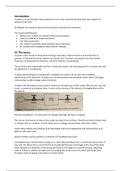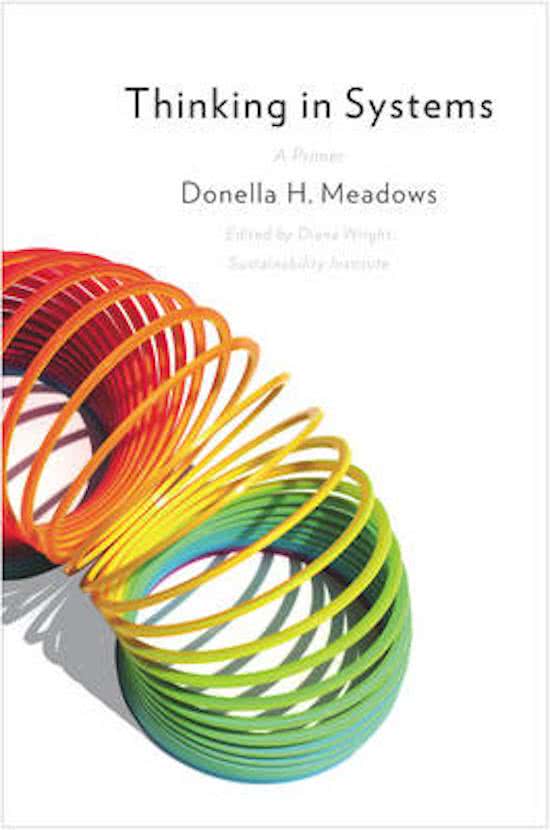Introduction
A system is a set of things interconnected in such a way that they produce their own pattern of
behavior over time.
Archetypes are common structures that produce characteristic behaviors.
The system-thinking lens:
• Allows us to reclaim our intuition about whole systems
• Hone our abilities to understand parts
• See interconnections
• Ask "what if" questions about possible future behaviors
• Be creative and courageous about system redesign
H1 The basics
A system must consist of three kinds of things: elements, interconnections, and a function or
purpose. If information-based relations are hard to see, functions or purposes are even harder.
Purposes are deduced from behavior, not from rhetoric or stated goals.
The word function is generally used for a nonhuman system, the word purpose for a human one, but
the distinction is not absolute.
A system generally goes on being itself, changing only slowly if at all, even with complete
substitutions of its elements- as long as its interconnections and purposes remain intact. Changing
relationships usually changes system behavior.
A stock is the foundation of any system. Stocks are the elements of the system that you can see, feel,
count, or measure at any given time. A stock is the memory of the history of changing flows within
the system.
Dynamic equilibrium = its level does not change, although the flow is ongoing.
The human mind seems to focus more easily on stocks than on flows. Thereby we tend to focus more
on inflows than on outflows. A stock takes time to change, because flows take time to flow.
Stocks allow inflows and outflows to be decoupled and to be independent and temporarily out of
balance with each other.
System thinkers see the world as a collection of "feedback processes".
A feedback loop is formed when changes in a stock affect the flows into or out of that same stock. In
any case, the flows into or out of the stock are adjusted because of changes in the size of the stock
itself. Whoever or whatever is monitoring the stock's level begins a corrective process, adjusting
rates of inflow or outflow (or both) and so changing the stock's level. The stock level feeds back
through a chain of signals and actions to control itself.
,Balancing feedback loops are goal-seeking or stability-seeking.
Reinforcing loops are self-enhancing, leading to exponentional growth or to runaway collapses over
time.
70 divided by the growth rate is the shortcut to know the exponentially growing for stock to double.
CH2 A brief visit the Systems Zoo
There's an important general principle here, and also one specific to the thermostat structure. First
the general one: The information delivered by a feedback loop can only affect future behavior; it
can't deliver the information, and so can't have an impact fast enough to correct behavior that drove
the current feedback. There will always be delays in responding.
, There are questions you need to ask that will help you decide how good a representation of reality is
the underlying model:
• Are the driving factors likely to unfold this way?
• If they did, would the system react this way?
• What is driving the driving factors?
A system analysis can test a number of scenarios to see what happens if the driving factors do
different things. But you have to judge of which scenario, if any, should be taken seriously as a future
that might really be possible.
The second question is more scientific. It's a question about how good the model is. The third
question is about system boundaries. It requires a hard look at those driving factors to see if they are
actually independent, or if they are also embedded in the system.
Model utility depends not on whether its driving scenarios are realistic, but on whether it responds
with a realistic pattern of behavior.






